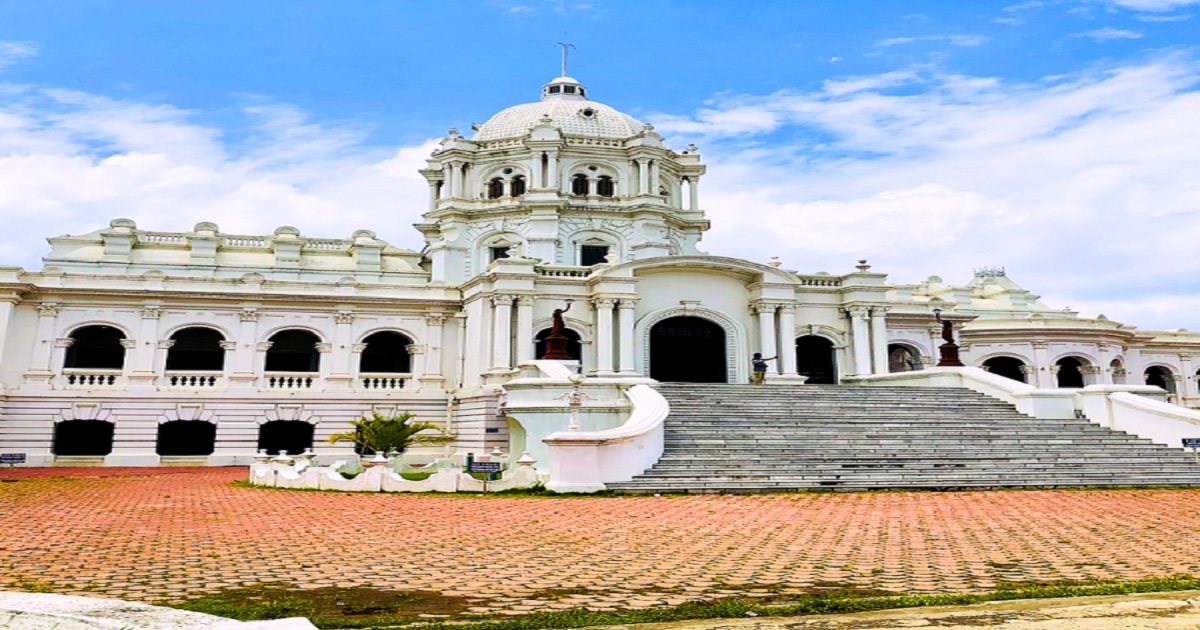Tripura Belongs to Its People: Debunking the Myth of Royal Entitlement!!!
Biswanath Bhattacharya
September 10, 2025

In the heart of Northeast India lies Tripura—a state woven from the threads of complex history and vibrant culture, where rivers course through emerald hills and the laughter of many tongues mingles in the marketplace. Here, ancient palaces now stand as silent witnesses to an era of monarchy, but the pulse of Tripura beats in its people, not in the faded echoes of royal decree. In recent years, however, a persistent myth has taken root: that Tripura’s lands remain the birthright of its former royal family. This myth, cloaked in nostalgia, seeks to divide communities and distort history for personal gain. It is a claim as insubstantial as mist, and just as quickly it must dissolve before the light of truth.
The historical record is unequivocal. After the sudden death of Maharaja Bir Bikram Kishore Manikya in 1947, Tripura entered a period of uncertainty. His son, Kirit Bikram Kishore Deb Barman, was still a child, prompting the formation of a Council of Regency led by his mother, Maharani Kanchanprabha Devi. Facing immense pressures both from within and from the changing political climate of post-independence India, the Maharani dissolved the council and assumed direct regency.
Then, on 9th September 1949, came the moment of transformation: the Tripura Merger Agreement was signed, formally integrating the princely state into the Indian Union. No mere symbolic gesture, this agreement transferred all powers, land rights, and governance to the Government of India. In return, the royal family retained only ceremonial privileges, a privy purse, and certain private properties—not the vast tracts of public land some now claim. The change was irreversible; from 15th October 1949, Tripura became a centrally administered territory, its administration guided by the Parliament and the Constitution of India, not the will of a dynasty.
The myth that cities like Agartala, Teliamura, or Kanchanpur are the personal possessions of royal descendants is not only historically unsound but legally untenable. These cities are not mere vestiges of dynastic grandeur; they are living urban landscapes, shaped by generations of ordinary people—farmers, artisans, traders, refugees. Each brick laid, each road built, and each festival celebrated, speaks to the collective spirit of a diverse populace. Tripura’s land is the inheritance of its people, held in trust by the state for all communities, and safeguarded by the Constitution.
Equally troubling is the narrative that Bengalis are ‘outsiders’ to Tripura’s story. To paint an entire community as alien overlooks centuries of shared history and cultural exchange. Bengalis have long played an integral role in the region, from serving as advisers to the royal court to building Tripura’s schools, hospitals, and civic institutions. The influx of Bengali refugees in the wake of partition—fleeing the fires of communal violence in East Pakistan—was met with open arms, not hostility, by the monarchy and local society. Compassion, not division, defined Tripura’s response. To vilify their presence today is to betray the very humanitarian legacy that Tripura once exemplified.
Tripura’s identity today is democratic, pluralistic, and inclusive. It is a mosaic of Tripuris, Bengalis, Reangs , Mainpuri’s, Jamatias, Chakmas, and many others, each contributing to the state’s evolving narrative. Whether in the bustling lanes of Agartala, the tranquil villages nestled along the Gomati River, or the sacred groves where traditions thrive, the people—regardless of origin—shape the contours of Tripura’s future. The Constitution guarantees equal rights to all citizens; no single tribe, caste, or royal lineage holds exclusive claim to the land or its legacy.
The claim of royal entitlement is like a shadow cast at sunset—looming large for a moment, then fading as the day turns. The true legacy to honor is unity, not division; citizenship, not privilege. Tripura belongs to those who cultivate its land, teach its children, heal its sick, and celebrate its festivals. Its future will be shaped not by the memories of palace walls, but by the strength and aspirations of its people.
Let us allow history to be our guide, not a weapon wielded to wound and separate. Let democracy serve as our compass, pointing toward a horizon where all voices are heard and valued. And just as the monsoon rain nourishes every field, so too must Tripura’s promise be shared by all—regardless of ancestry or surname. In the tapestry of Tripura, every thread matters, and together they create a fabric strong enough to resist the pull of false entitlement and embrace the light of unity.
Let history be our guide, not a weapon. Let democracy be our compass, not nostalgia. And let Tripura’s future be shaped by its people—together. And those who seek to drag it backwards—under the guise of heritage, under the mask of cultural pride—must be called out, challenged, and rejected. Not with violence. Not with vengeance. But with clarity, conviction, and the collective voice of a people who know their worth.
Tripura is not a relic. It is a republic. And it will not be ruled by shadows. Let us not play with fire, for even the tiniest spark may ignite a blaze beyond our power to tame.
(Tripurainfo)
more articles...